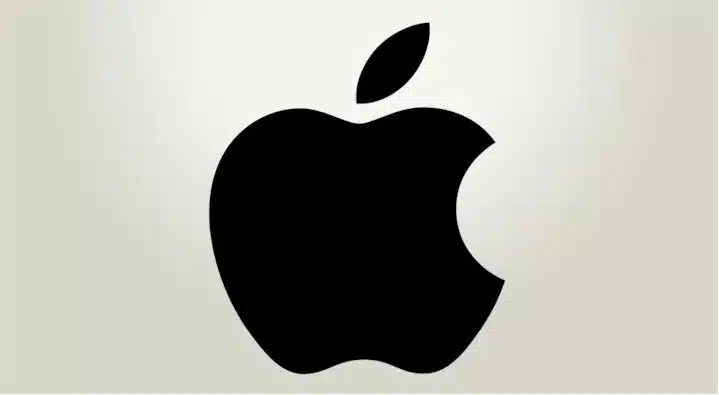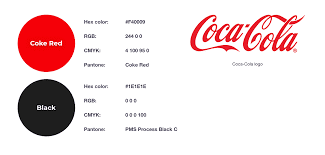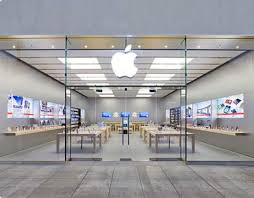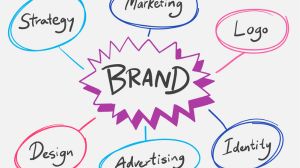Building a strong brand goes beyond just having an attractive logo. Brand assets are the key elements that make your brand memorable and recognizable. These assets are the essential pieces that form your brand’s identity. They include your logo, color palette, typography, brand voice, and imagery. In this article, I will share strong brand assets that will boost your brand. I’ll show you how these assets can make your brand stand out. Whether you’re starting fresh or revamping your brand, these brand assets will make a big difference. From your website design to social media graphics, every piece matters.
Key Points
- Brand assets are all about crafting a memorable brand identity that makes you stand out in a crowded marketplace.
- A strong brand identity doesn’t happen by accident. It’s built on a foundation of clear and consistent branding guidelines.
- The way you communicate, the language you use, the punctuation, and even emojis, all contribute to your brand identity.
- If a brand resonates with a large group of people, it can give them a sense of belonging and even elevate their social standing within that group.
- Graphics are important. These visual elements can speak volumes about your brand when used strategically.
Brand Assets
Brand assets are the key elements that make a brand unique and recognizable. They are like the DNA of a brand. These assets include the logo, colors, fonts, slogans, and even the tone of voice used in communication.
I’ve seen how useful these elements can be. Take my company logo, for instance, It is not just a symbol; rather, it is the face of our brand.
The key to effective brand assets is consistency. Every element should work together to create a unified image of your brand. This helps your business stand out and be easily recognized. When customers see your brand assets, they should immediately know it’s you and not a competitor.
Remember, every business is different. What works for one company might not work for another. Some might need a strong mascot, while others need distinctive packaging. It is important to identify what assets will best represent your brand and also make sure they reflect who you are.
Lamphills Brand Assets Checklist
Brand Assets Examples
Creating a strong brand requires more than just a catchy name and a good product. It involves crafting and consistently using a set of distinctive elements that make your brand instantly recognizable and memorable. These elements, known as brand assets, shape how consumers perceive and interact with your brand. From logos and color palettes to jingles and store layouts, each asset plays a crucial role in building your brand’s identity and connecting with your audience. Now stay with me as I explore some key brand assets examples you’ll want to have.
#1. Brand Name
Your brand name is like your fortress’s flag, it is the first thing people see. It should be unique, memorable, and ideally reflect what you do. Think of a short and sweet name, one to three words is ideal. In my field experience,
#2. Logo
Your logo is the face of your brand. It’s the first thing people notice and remember. Let’s use the Apple logo. For instance, Apple’s bitten apple logo is simple, sleek, and instantly recognizable, symbolizing innovation and elegance. A good logo is simple, memorable, and versatile, working well in different sizes and contexts.

#3. Tagline
A tagline is a short, catchy phrase that summarizes your brand’s promise and essence. Nike’s “Just Do It” inspires action and confidence, making you feel ready to tackle any challenge. A great tagline sticks in people’s minds and creates an emotional connection, like a motivational quote that keeps you going.

#4. Color Palette
Colors evoke emotions and set the tone for your brand. Color like red can convey excitement and urgency, while blue might suggest trust and calm. For example, Coca-Cola’s red and white scheme feels festive and familiar, and Tiffany & Co.’s signature blue box makes you think of luxury and special moments. Your color palette can bring up similar feelings to your audience.

#5. Jingle
A catchy tune can make your brand unforgettable. The “I’m Lovin’ It” jingle by McDonald’s is recognized worldwide, it instantly makes you think of happy meals and fun moments. Jingles create a lasting auditory imprint, like a favorite song that brings back memories every time you hear it.
#6. Website Design
Your website is your digital storefront. A well-designed website reflects your brand’s quality and values. It has to be Airbnb’s user-friendly, visually appealing site that makes booking accommodations feel effortless and exciting, like planning an adventure with a trusted friend. Your website should be a welcoming space that guides visitors seamlessly to what they need.
#7. Business Cards
A well-designed business card makes a memorable impression. It should reflect your brand’s professionalism and creativity. Think of how it feels to hand over your well-crafted business card with its custom design, instantly standing out in a pile and sparking a conversation. Your business card is a small but powerful ambassador for your brand.
#8. Customer Service
The way you handle customer interactions speaks volumes about your brand. Lamphills is known for exceptional customer service, strengthening its reputation for caring about its customers’ or clients’ happiness. Think of how a friendly, helpful response can turn a frustrated customer into a loyal advocate, just like a warm smile can brighten someone’s day.
#9. Advertising
Your ads should consistently reflect your brand’s look and feel. Coca-Cola’s holiday commercials with the iconic red trucks and cheerful music reinforce its image of happiness and tradition, which in turn makes the viewer or customer feel joyful. Effective advertising keeps your brand top-of-mind and connects emotionally with your audience.
#10. Mascots
A mascot can personify your brand and make it more relatable. For example, Tony the Tiger brought energy and fun to Kellogg’s Frosted Flakes, and Geico Gecko’s quirky charm makes insurance less intimidating. Mascots can create a friendly face for your brand, appealing to both kids and adults.

#11. Legal
Once you’ve established your brand identity through logos, fonts, and mascots, you’ll want to safeguard it with legal assets. These include things like terms and conditions, community guidelines, and copyright contracts. Legal assets can also contribute to your brand’s image. For instance, Reddit’s community guidelines allow more freedom of expression than platforms like Facebook or Instagram.
#12. Packaging
Your product packaging is your brand’s mini billboard. It needs to grab attention and convey your brand’s message. Apple’s clean, elegant packaging makes you feel like you’re unwrapping a gift every time you open it, enhancing its premium image. Great packaging creates anticipation and excitement, turning a simple purchase into an experience.
#13. Store Layout
The layout of your physical store influences the customer experience. Apple Stores are designed with open spaces and minimalistic decor, making you feel like you’re stepping into a modern, innovative environment. A well-thought-out store layout guides customers smoothly through their shopping journey, creating a pleasant and memorable experience, like walking through a beautifully curated art gallery.

Benefits of Brand Assets
From my own experience in the field, I’ve seen how powerful brand assets can be for a business. They help people recognize you instantly, build trust, and make your marketing efforts easier. It’s amazing how these elements can build trust, simplify marketing, and give you an edge over the competition. Let me share with you the key benefits I’ve observed and why they matter so much.
1. Instant Recognition
Brand assets like logos and colors make it easy for people to spot your brand among others. This kind of immediate recognition helps your brand stand out, builds trust, and makes people more likely to remember you. It’s like wearing a unique outfit that everyone notices and remembers.
2. Emotional Connection
Consistent brand elements help create a strong emotional bond with your customers. When people see your brand consistently presented, they start associating it with the positive experiences they’ve had with your products or services. You know when you hear a favorite song that brings back good memories. This emotional connection makes them more loyal and more likely to choose your brand over others, even if the competition is fierce.
3. Consistent Messaging
Using the same brand elements across all your marketing materials ensures that your message is always clear and reliable. Whether it’s a social media post, a website banner, or a TV commercial, the look and feel are consistent. This makes your brand appear professional and dependable. It’s like having a uniform that signals who you are and what you stand for, making it easier for people to understand and trust your brand.
4. Increased Loyalty
When customers know exactly what to expect from your brand, they’re more likely to stick with you. Consistent use of brand assets reassures them that they’ll get the same quality and experience every time. It’s like going to your favorite coffee shop, where you know your order will always be perfect. This predictability strengthens customer loyalty and keeps them coming back.
5. Easier Marketing
Having strong brand assets simplifies your marketing efforts. Your team doesn’t have to start from scratch every time—they know what colors, fonts, and imagery to use. This not only saves time but also ensures that everything aligns with your brand’s identity. It’s like having a recipe that you know by heart, making it easy to cook your favorite dish without any fuss.
6. Competitive Edge
In a crowded market, strong brand assets make you stand out. They differentiate your brand from competitors, making it easier for customers to choose you. It is like having a signature style that sets you apart from the crowd. This uniqueness attracts more customers and drives sales, giving you a clear advantage over others in your industry.
Brand Assets Valuator
A brand asset valuator is a tool used by marketers to measure the strength and value of a brand. It helps businesses understand how well their brand is performing in the market. Think of it as a health check-up for your brand. By analyzing various aspects, it shows how a brand is perceived by consumers. Additionally, this insight is important for making informed decisions to boost brand performance, identify weaknesses, and capitalize on strengths. In simple terms, a brand asset valuator gives you a clear picture of where your brand stands and how to improve its position in the market.
So, in simple terms, the brand asset valuator is your brand’s best friend, helping you understand its strengths and weaknesses so you can give it the boost it needs to conquer the market.
Brand Assets Valuator Variables
These four variables collectively provide a comprehensive framework for assessing a brand’s strength, identifying areas for improvement, and developing strategic initiatives to enhance brand equity. By analyzing each variable’s impact on consumer perceptions and behavior, businesses can refine their brand strategies to drive growth, loyalty, and competitive advantage in the marketplace. Now, stay with me as I dig deep into these brand assets’ valuator variables and give them some extra value.
Differentiation
This measures a brand’s distinctiveness and uniqueness compared to competitors. A brand with high differentiation stands out in the market, offering something unique or innovative that sets it apart. For instance, Apple’s design aesthetics and user experience distinguish it from other technology companies.
Relevance
Relevance gauges the appropriateness and significance of a brand to its target audience. A brand that resonates with consumers’ needs, preferences, and lifestyles is deemed relevant. For example, Nike’s focus on athletic performance and style resonates with its target audience of athletes and fitness enthusiasts.
Esteem
Esteem reflects the level of admiration and respect that consumers hold for a brand. Brands with high esteem are trusted, respected, and admired by consumers, often due to their consistent quality, reputation, or societal impact. Luxury brands like Rolex or Mercedes-Benz command high levels of esteem due to their prestigious image and quality craftsmanship.
Knowledge
Knowledge pertains to the familiarity and awareness of a brand among consumers. A brand with high knowledge is well-known and easily recognizable, often due to effective marketing efforts, brand visibility, and consumer exposure. Coca-Cola, for instance, enjoys widespread awareness and recognition globally due to its extensive marketing campaigns and iconic branding.
Brand Assets Management
Brand asset management is all about taking care of everything that makes your brand unique and recognizable. These assets include your logo, color schemes, fonts, images, and even the tone of voice in your messaging. Managing them means keeping them consistent and readily available for anyone who needs to use them. This ensures that every piece of communication from your brand looks, feels, and sounds the same. Additionally, brand assets management helps your brand stay strong, recognizable, and trusted by keeping all its parts in order

Benefits of Brand Assets Management
Brand asset management is about maximizing your brand’s potential, saving time and money, making smarter decisions, and fostering teamwork. It’s the backbone of a strong, consistent, and effective brand presence. Now, managing these assets well means you’re not just keeping them in order; instead, you’re using them to their fullest potential. With this being said, I will go further to break down the benefits of brand asset management.
Brand Consistency
When all your team members have access to the same, up-to-date assets, everyone’s on the same page. This means no more mismatched logos or off-brand colors sneaking into your marketing materials. It keeps your brand looking sharp and professional across all platforms, which also builds trust with your audience.
Time and Cost Savings
Think about how much time is wasted searching for that one logo file or recreating assets from scratch. With a good brand asset management system, everything’s organized and easy to find. This efficiency reduces duplication of work and speeds up the creation process, freeing up your team to focus on more important tasks.
Strategic Advantage
When you know exactly what assets you have and how they’re performing, you can make better decisions. Also, you’ll see which visuals and messages resonate most with your audience, allowing you to refine your strategy and improve your marketing efforts. It’s like having a map that shows you the best routes to your destination.
Collaboration
A centralized system for your brand assets makes it easy for different departments to work together seamlessly. Whether it’s marketing, sales, or customer service, everyone has the tools they need to represent the brand accurately. This unified approach ensures your brand speaks with one voice, strengthening its identity and impact.
How Do You Create Brand Assets?
Creating brand assets involves several steps to ensure consistency and effectiveness across various platforms and materials. Here’s my general guide on how to create one.
- Understand Your Brand: Begin by defining your brand identity. What does your brand stand for? What are its values, mission, and personality? Understanding your brand’s essence is necessary for creating assets that accurately represent it.
- Design Your Logo: Your logo is the most recognizable symbol of your brand. It should be unique, memorable, and reflective of your brand identity. Consider colors, typography, and imagery carefully to convey the right message.
- Develop Brand Guidelines: Establish clear guidelines for using your brand assets. This includes specifications for your logo (e.g., size, color variations), typography (font styles, sizes), color palette, imagery style, and overall brand voice. These guidelines ensure consistency across all materials and platforms.
- Create Visual Assets: Beyond the logo, you’ll need other visual assets such as graphics, icons, and imagery. These should align with your brand’s aesthetic and reinforce its identity. Design these assets with your brand guidelines in mind.
- Design Templates: Develop templates for various materials like business cards, letterheads, presentations, social media posts, etc. These templates should incorporate your brand elements and make it easy for your team to create consistent, on-brand materials.
- Digital Assets: In today’s digital age, digital assets are essential. This includes elements like website design, email templates, social media banners, and digital advertisements. Ensure that these assets are optimized for different screen sizes and platforms.
- Print Assets: If your brand produces print materials like brochures, posters, or packaging, design assets accordingly. Pay attention to print specifications such as resolution, color mode (CMYK for print), and bleed.
- Iterate and test: Once you have your brand assets, continually evaluate their effectiveness. Seek feedback from stakeholders and test how well the assets resonate with your target audience. Iterate and refine as needed to ensure your brand remains relevant and impactful.
What Are Your Personal Brand Assets?
I constantly ask myself these questions whenever I go through the online world and build connections. It all boils down to how people see me, and the things that set me apart, the strengths, and the reputation you cultivate as a person are the treasure box you bring to the table. These assets are the tools you use to connect with others, build trust, and hopefully, leave a positive impact.
Related Articles
- BRAND RESONANCE: Elevating Brand Resonance Through Experiential Engagement
- Why Does Brand Recognition Help Businesses? 2024 Case Studies
- Brand Engagement: Meaning, Importance & Helpful Tips
- 11 Insane Brand Tracking Tools Will Blow Your Company’s Profits
- PUBLIC RELATIONS SERVICES: The PR Blueprint for Getting Your Brand Noticed






